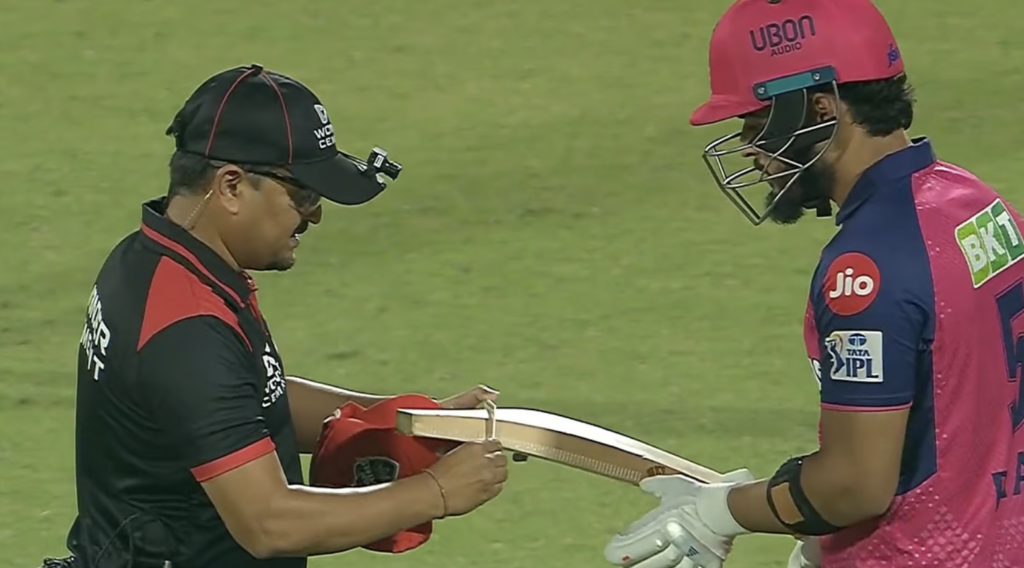
Videos and pictures of batters in the IPL failing the ‘bat-gauge’ test have been taking over the internet. First it were the Kolkata Knight Riders batters—Sunil Narine and Anrich Nortje, then it was Royal Challengers Bangalore’s Shimron Hetmyer and Phil Salt and the most recent victim of the newly-implemented rule was Rajasthan Royals’ Riyan Parag.
The ‘Bat-Gauge Test’ has been brought on to restrict the oversized use of willows in the IPL, mostly to balance a game that has traditionally been heavily tilted in favour of batters. The IPL committee ahead of the 2025 season has come up with a couple of guidelines to make sure that there is a fair contest between the bat and the ball—the guidelines include the lift on saliva ban, implemented during the Covid-19 surge, two new balls during the game and of course prohibition of oversized bats.
In the test, a triangle plastic tool is used to measure the dimensions of the bat. If bats fail to pass through the tool, batters are required to replace the bats. The dimensions of the bat should not exceed the following under Law 5 of the MCC Law of Cricket:
Depth: 2.64 inches
Width: 4.25 inches
Edge Thickness: 1.56 inches
Bulge of the bat: 0.20 inches
The Chairman of the IPL, Arun Dhumal spoke about the implementation of the rule “Nobody should feel that somebody’s got an undue advantage. The BCCI and IPL have always taken all initiatives in this direction so that the fairness of the game is maintained. We have used technology to the maximum to make sure that all decisions can be reviewed so that the games don’t get unfairly affected. The idea behind this initiative is to ensure that the spirit of the game is maintained,” told Dhumal to Indian Express.
Why was the rule implemented mid-season?
The ‘bat-gauge’ rule had been discussed among the top officials of the IPL before the tournament had started but the delay in the implementation of the rule was because the rule hadn’t been ratified by all the members of the governing council. After the ratification, the rule was formally introduced only a few days ago on the 13th of April.
The rule had previously existed in the IPL but with a different set of systems. Earlier, the fourth umpire was responsible for the checks, a day before the match. Yet, the checks were randomised and not all players had to go through the test. Quite obviously, the rule left a huge loophole where batters could still get away with using oversized bats.
To circumvent the loophole, a strict system has been put in place, where the fourth umpire checks the openers’ bats before they walk out on the field, meanwhile the on-field umpires conduct the bat-gauge test with the other batters. The test can be performed at any given moment throughout the innings.
Are there any sanctions to the rule?
As of now, when the batters fail the bat-gauge test, they are only legally required to change the bats—no sanctions have been introduced. The rule is somewhat borrowed from a similar rule implemented by the England Cricket Board in their domestic tournaments.
Also check out
Would the IPL have taken off as it did without the impetus provided by Yuvraj’s six sixes and India’s 2007 World T20 win? Would the broadcasters and advertisers have lapped up the concept? What we know is that the IPL changed everything.
✍️@BoriaMajumdarhttps://t.co/xDx1xogbX7
— RevSportz Global (@RevSportzGlobal) April 18, 2025




